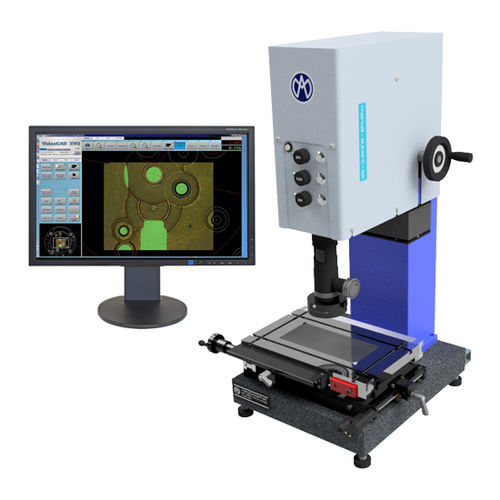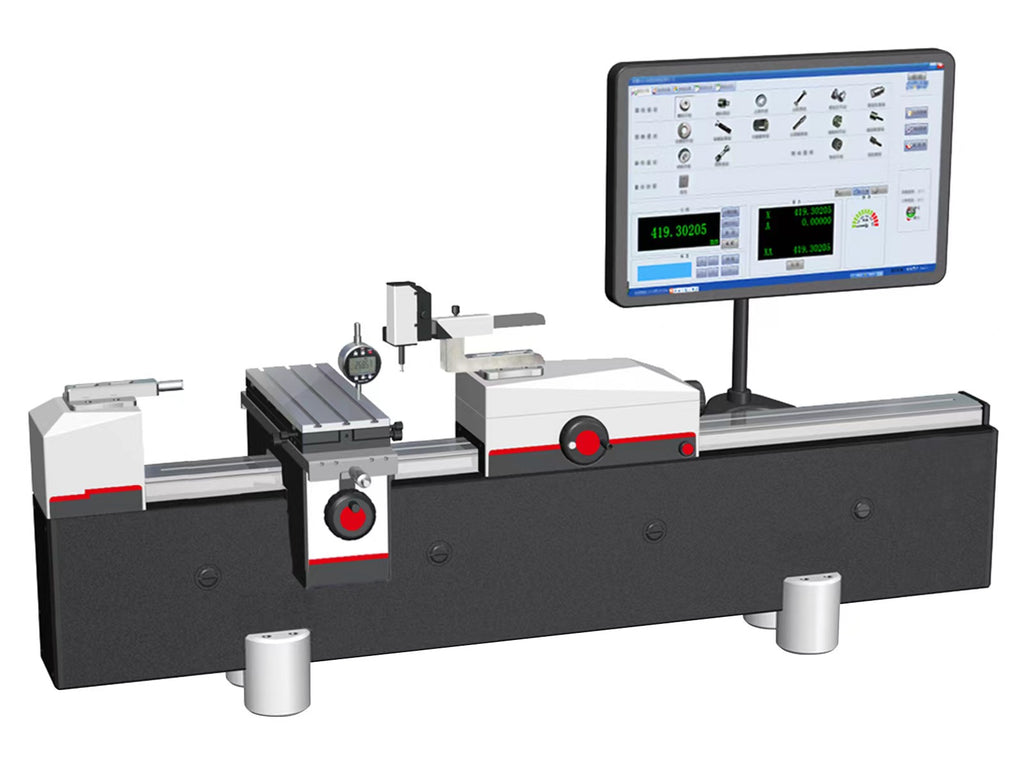How optical measurement systems minimize waste and rework in lean manufacturing
How optical measurement systems minimize waste and rework in lean manufacturing
Blog Article
Recognizing Exactly How Optical Dimension Solution Enhance Quality Assurance Processes
When you're looking to boost top quality control procedures, recognizing optical dimension systems is crucial. Allow's discover the vital aspects that make optical measurement a game-changer in quality management.

The Fundamentals of Optical Dimension Equipments
Optical dimension systems play a critical function in ensuring product quality throughout numerous markets. These systems use light-based technologies to collect specific information about physical characteristics, such as dimensions, surface coating, and shade. By employing lasers, sensing units, and cams, you can accomplish non-contact measurements that decrease the danger of damaging fragile products.
Recognizing the basics of these systems is fundamental for reliable quality assurance. They operate on concepts like reflection, refraction, and diffraction, allowing you to examine various products and forms. The accuracy and rate of optical measurements allow real-time monitoring, which assists you identify flaws early in the production process.
Moreover, these systems can be integrated with software for boosted data analysis, developing a complete top quality management strategy. By leveraging optical dimension systems, you not only improve performance however additionally guarantee your products satisfy rigorous high quality criteria, ultimately improving consumer complete satisfaction.
Sorts Of Optical Measurement Technologies
Various kinds of optical dimension technologies are offered, each created to fulfill specific requirements in quality assurance. You could encounter laser triangulation, which determines range by assessing the angle of a reflected laser beam. This innovation is excellent for capturing accurate dimensions in 3D area.
One more choice is structured light, where you forecast a series of light patterns onto a surface to produce an in-depth 3D version. This approach functions well for intricate geometries.
After that there's interferometry, which can detect minute changes in surface accounts by analyzing the disturbance patterns of light waves. This is specifically beneficial for applications calling for nanometer accuracy.
You might likewise think about optical coherence tomography, which offers high-resolution images of inner attributes without harming the item. Each innovation serves different needs, so picking the appropriate one is crucial for attaining highest quality control results.
Key Advantages of Optical Dimension in Quality Assurance
When it pertains to high quality control, leveraging optical measurement modern technologies can substantially improve accuracy and performance. These systems enable you to catch detailed dimensions swiftly, decreasing the time required for assessments. You'll discover that optical dimensions can determine even the tiniest flaws that might go undetected with standard methods, making certain product uniformity.
Furthermore, using optical dimension systems typically results in lowered waste and rework, as you capture problems early in the production procedure. You'll also appreciate the non-contact nature of several optical techniques, which minimizes damage to fragile components throughout assessment. This versatility permits a wider array of applications across different products.
With real-time data collection, you can make educated choices swiftly, enhancing your quality guarantee processes (optical measurement). Ultimately, integrating optical dimension right into your quality assurance method not just boosts efficiency yet also enhances client satisfaction by delivering higher-quality products regularly
Just How Optical Dimension Equipment Improve Precision and Precision
Optical measurement systems enhance accuracy and precision by enhancing dimension resolution, allowing you to identify even the smallest variations. With real-time data evaluation, you can make instant changes and decisions, guaranteeing your procedures remain on track. This combination not just boosts item high quality yet also improves your quality assurance efforts.
Improved Measurement Resolution
By leveraging innovative modern technologies, optical measurement systems greatly improve measurement resolution, leading to boosted accuracy and accuracy in quality assurance. These systems use high-resolution electronic cameras and innovative formulas to capture minute details that conventional methods frequently miss. You'll observe a significant difference in the clearness of measurements, allowing you to recognize even the least variances from specs. This raised resolution assists eliminate uncertainty, supplying you with data that's both reputable and actionable. Therefore, you can make even more educated decisions and maintain tighter resistances in your processes. Ultimately, enhanced dimension resolution not only increases item top quality yet additionally optimizes resource use, ensuring that you meet customer expectations consistently.
Real-Time Data Evaluation
Although traditional measurement systems commonly count on postponed information handling, real-time information evaluation in optical dimension systems reinvents the means you keep track of high quality. By supplying immediate feedback, these systems enable you to identify deviations and variances as they occur, permitting speedy rehabilitative activities. You'll experience enhanced precision because you can immediately contrast measurements against predefined criteria. This gets rid of uncertainty and minimizes the danger of problems slipping with. Furthermore, real-time information aids you accumulate important understandings over time, tweak your quality assurance procedures. With this cutting-edge modern technology, you'll boost both precision and performance, making certain that your items consistently satisfy high requirements. Accept real-time analysis, and enjoy your quality assurance initiatives skyrocket to brand-new heights.
Incorporating Optical Dimension Into Existing Quality Assurance Processes
Incorporating optical dimension right into your existing quality assurance procedures can noticeably enhance precision and effectiveness. By incorporating optical measurement systems, you can simplify data collection, decreasing human mistake while boosting the speed of assessments. Beginning by recognizing bottom lines in your assembly line where optical dimensions will give the most value.
Following, educate your team on the new innovation, guaranteeing they understand just how to utilize the systems properly. This training will certainly aid them interpret results rapidly and properly.
You should additionally develop a procedure for integrating optical information right into your existing high go to these guys quality management software. This assimilation permits real-time analytics and reporting, enhancing decision-making.
Consistently examine the data and comments from your group to identify any kind of areas for renovation. With these actions, you'll not only improve your quality assurance processes however likewise foster a society of continual enhancement within your organization.
Instance Researches: Effective Application of Optical Measurement Systems
In this section, you'll explore how optical measurement systems have actually transformed quality assurance in sectors such as aerospace and auto production - optical measurement systems. You'll see real-world examples of just how these technologies boosted accuracy and effectiveness. These situation researches highlight the substantial benefits of incorporating optical systems right into production processes
Aerospace Market Applications
As the aerospace industry encounters raising needs for precision and effectiveness, business are transforming to optical dimension systems to boost their high quality control processes. A leading airplane supplier incorporated optical dimension modern technology Your Domain Name to check generator blades, lowering evaluation time by 50% while boosting accuracy.
Automotive Manufacturing Success
Optical dimension systems have actually additionally made significant strides in the automotive manufacturing market, where accuracy is vital to lorry performance and safety. BMW integrated optical measurement for body setting up, making sure parts fit flawlessly, which decreased rework and raised production effectiveness. These case research studies show exactly how optical dimension systems equip you to attain tighter resistances, minimize waste, and boost total product top quality.
Future Fads in Optical Measurement and Quality Control
While advancements in technology remain to improve the production landscape, pop over to these guys the future of optical dimension and quality control looks promising - optical measurement system. You'll see a substantial shift towards automation and AI combination, allowing systems to examine information in real-time. This suggests quicker decision-making and minimized human mistake, inevitably improving product quality
Moreover, as 3D imaging modern technology boosts, you'll benefit from more exact measurements of complex geometries, making it much easier to maintain limited tolerances. The increase of cloud-based options will also enable you to accessibility information from another location, promoting partnership and streamlining procedures.
Additionally, sustainability will play a vital duty in future advancements. Expect optical dimension systems to concentrate on power efficiency and waste reduction, straightening with worldwide environmental objectives. By welcoming these trends, you can ensure your quality control procedures continue to be sophisticated, aiding your organization prosper in a progressively open market.
Often Asked Questions
What Industries Advantage Most From Optical Measurement Solutions?
You'll find markets like manufacturing, aerospace, and vehicle advantage most from optical dimension systems. These fields rely on precise measurements for quality control, guaranteeing products fulfill rigorous requirements and improving general functional efficiency.
How Do I Select the Right Optical Measurement System?
To select the appropriate optical dimension system, evaluate your details requirements, take into consideration the kind of dimensions you call for, assess the system's precision, and guarantee it fits your budget and functional requirements.
What Are Usual Obstacles in Implementing Optical Dimension Equipments?
You'll face obstacles like combination with existing systems, making certain accurate calibration, training team efficiently, and handling prices. Determining these obstacles early helps you develop approaches to conquer them and successfully carry out optical dimension systems.

Exist Training Resources Available for Optical Measurement Technologies?
Yes, there're numerous training sources offered for optical measurement innovations. You can locate on the internet programs, webinars, and workshops used by market experts or companies. These resources can assist you successfully execute and utilize these advanced systems.
How Do Optical Measurement Equipments Compare to Typical Measurement Techniques?
Optical dimension systems supply greater precision and speed contrasted to conventional methods. They decrease human mistake, enable non-contact dimensions, and supply real-time information analysis, making them more reliable for various applications in top quality control.
Conclusion

Optical dimension systems increase accuracy and precision by enhancing dimension resolution, allowing you to find also the smallest variations.By leveraging sophisticated technologies, optical dimension systems considerably improve dimension resolution, leading to boosted accuracy and precision in top quality control.Although typical dimension systems frequently count on delayed data handling, real-time data evaluation in optical measurement systems reinvents the means you check top quality.As the aerospace sector encounters raising needs for accuracy and performance, business are transforming to optical measurement systems to improve their quality control processes. How Do Optical Dimension Equipments Contrast to Standard Dimension Techniques?
Report this page